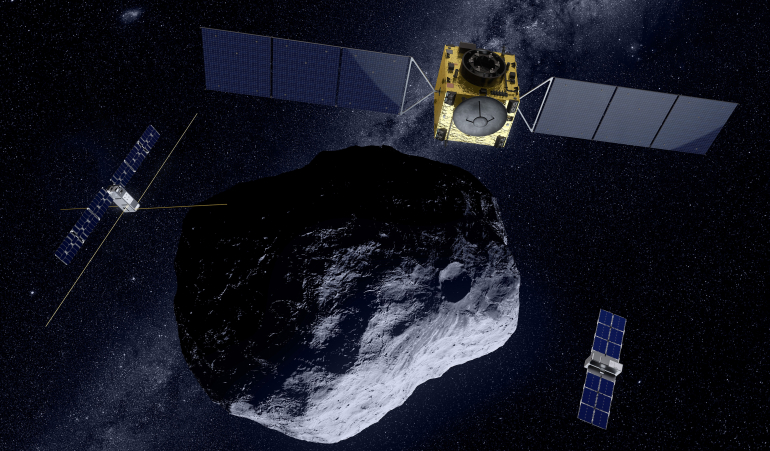
The European Space Agency's Hera mission will be launched in October 2024. The Walloon company SPACEBEL has played a key role in this bold initiative, making important software contributions at several levels.
The European Space Agency's Hera mission is Europe's first planetary defense mission. Alongside NASA's DART probe, Hera is the second part of an international demonstration mission designed to validate a viable method of protecting the Earth and humankind from asteroids that could threaten our planet. Hera's target: a binary asteroid system consisting of Didymos (780m diameter) and its small moon Dimorphos (160m diameter). The launch of Hera aboard a SpaceX Falcon-9 rocket from the Kennedy Space Center in Florida (USA) is scheduled for October 2024. After a two-year journey, the Hera observer should reach its destination by the end of 2026. The aim of Hera is to examine the consequences of the September 2022 impact between the American DART probe and the Dimorphos asteroid. It will also map Dimorphos' surface through a series of close flybys, demonstrating innovative technologies such as autonomous navigation around an asteroid.
In this European planetary defense mission, the Walloon company SPACEBEL, based in Liège and founded in 1988, is playing a key role, providing important software contributions. “Hera is one of SPACEBEL's flagship projects, perfectly demonstrating our cross-disciplinary skills at every stage of a space mission: our achievements on Hera cover on-board software, simulation systems and the ground segment,” explains Thierry du Pré-Werson, Managing Director of SPACEBEL.
As a reminder, SPACEBEL is a company active in the space sector and in environmental and land management: design, development, integration and validation of ground or embedded software systems.
 (©ESA-ScienceOffice)
(©ESA-ScienceOffice)
Specifically, for the Hera mission, SPACEBEL has developed the spacecraft software system for the flight segment. As this is a deep-space mission, the software system will feature a very high degree of on-board autonomy, similar to that of a driverless car. This flight software, also known as the core software, runs on the on-board computer. It carries out the real-time functions of the craft, including command and control of on-board sub-systems, equipment and instruments, in particular the camera, used for both observation and navigation.
SPACEBEL has also developed three different simulation systems for the Hera mission.
For the ground segment, more specifically the mission and control centers, SPACEBEL is responsible for the Cubesat Mission Operations Center. Based at Redu in Wallonia, this center oversees all operations and controls the Milani and Juventas duo. It manages mission requests, flight dynamics, remote controls and telemetry, as well as data exchanges between the main spacecraft and the Cubesats. It also monitors the status of the Cubesats and their instruments. In addition, it acts as an interface with the scientific teams in charge of the Cubesats' payloads, translating their requests into commands for the on-board instruments, and then transmitting the scientific data and observations to them for analysis.
SPACEBEL's participation in a European mission of this scale is a great success for the Walloon company. “SPACEBEL is extremely proud to play a major role in this pioneering mission to protect the Earth. With more than 50 space missions under their belts, our engineers are fully committed to this extraordinary project, which calls for cutting-edge IT technologies to guarantee the performance and quality of our solutions, to the complete satisfaction of our customers and ESA in particular”, concludes Thierry du Pré-Werson.







